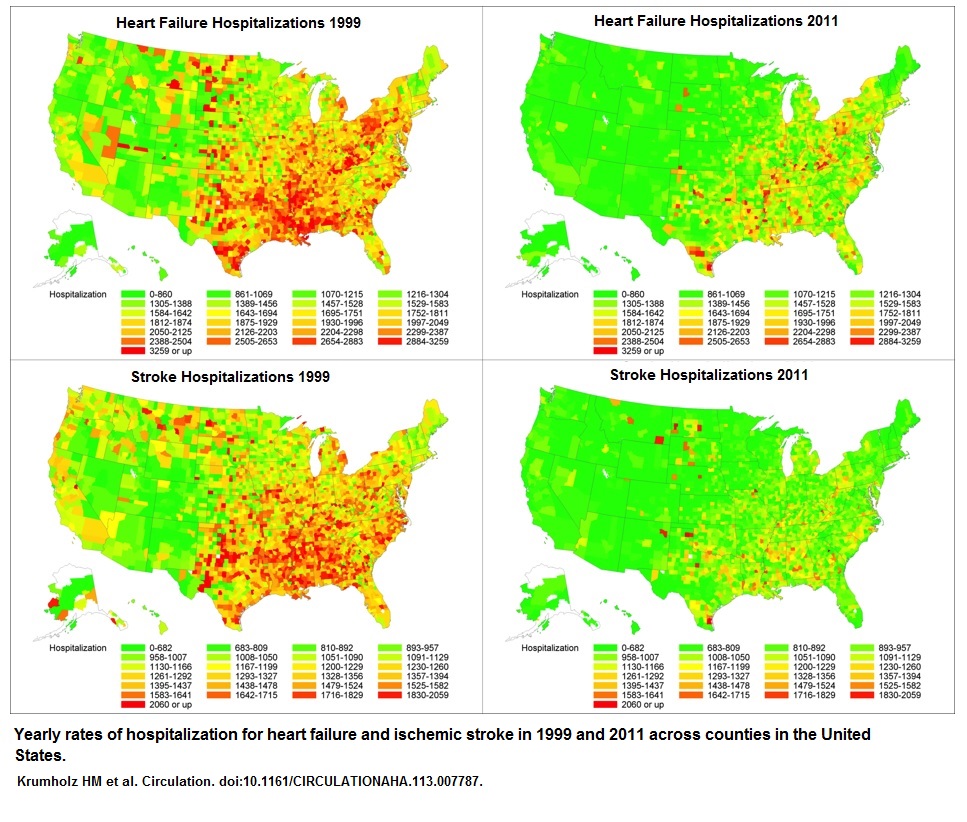'Astonishing Progress' Made on Heart Disease, Doctors Say

The rates of hospitalizations and deaths from heart disease and stroke in the U.S. have declined dramatically in the past two decades, a new study has found.
Researchers looked at the medical records of nearly 34 million people ages 65 or older who had been hospitalized for various conditions between 1999 and 2011, and found that the rate of hospitalization for heart attack, heart failure and stroke declined by about 30 to 40 percent over this time. This decline was more rapid than what was seen in other conditions.
Similarly, hospitalization rates for a heart condition called unstable angina — which is usually caused by blocked arteries that reduce blood flow to the heart, and can lead to a heart attack — dropped by 83 percent.
The results also showed that compared to 1999, people who were hospitalized in 2010 for a heart attack or unstable angina had a 23 percent lower risk of dying within a year. People who were hospitalized for heart failure or stroke had a 13 percent lower risk of dying within a year, according to the study, published today (Aug. 18) in the journal Circulation. [Top 10 Amazing Facts About Your Heart]
"Interestingly, these improvements happened in a period when there were no real 'miracle' clinical advancements," study researcher Dr. Harlan Krumholz, a professor of medicine at Yale University in New Haven, Connecticut, said in a statement. "Huge strides in lifestyle, quality of care and prevention strategies for cardiovascular health have seemed to have a ripple effect on saving lives," he said.
Medical advancements that did occur over the study period include early treatment of high blood pressure and a rise in the use of statins for high cholesterol, the researchers said. Other lifestyle factors such as a decline in smoking and emphasis on heart-healthy behaviors could be behind the trend as well, they said.
The new findings are in line with previous studies that found declines in rates of heart attack hospitalizations or deaths over shorter periods than the new study considered, the researchers said.
Get the world’s most fascinating discoveries delivered straight to your inbox.
The researchers noted that hospitalization rates for conditions other than heart disease and stroke also decreased, suggesting that other health problems didn't replace averted heart disease and stroke cases.
Despite the improvements, heart disease is still the leading cause of death in the United States. Every year about 600,000 Americans die of heart disease, and about 720,000 have a heart attack, according to the Centers for Disease Prevention and Control. Studies show as many as a quarter of the deaths from heart attacks and stroke every year are preventable.
"There is still more work to do as heart disease and stroke combined remain the leading cause of death and disability, but this study documents astonishing progress and national achievement," Krumholz said.
Email Bahar Gholipour. Follow Live Science @livescience, Facebook & Google+. Originally published on Live Science.




